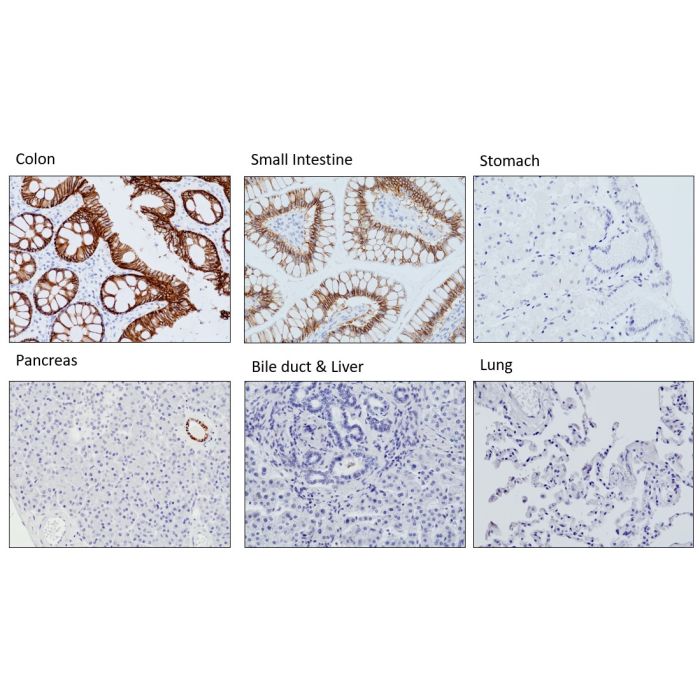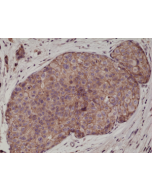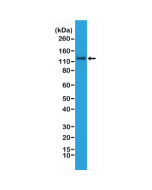Cookie Policy: This site uses cookies to improve your experience. You can find out more about our use of cookies in our Privacy Policy. By continuing to browse this site you agree to our use of cookies.
RevMab
anti-Cadherin-17 (human), Rabbit Monoclonal (RM529)

| Product Details | |
|---|---|
| Synonyms | CDH17; Intestinal Peptide-associated Transporter HPT-1; Liver–Intestine Cadherin; LI-Cadherin |
| Product Type | Recombinant Antibody |
| Properties | |
| Clone | RM529 |
| Isotype | Rabbit IgG |
| Source/Host | Rabbit |
| Immunogen/Antigen | A peptide corresponding to the internal region of human Cadherin-17. |
| Application |
Immunohistochemistry (IHC): 1:100-1:200 dilution Western Blot (WB): 1:1000-1:2000 dilution |
| Crossreactivity | Human |
| Specificity |
This antibody binds to human Cadherin-17. |
| Purity | Protein A purified. |
| Purity Detail | Protein A affinity purified from an animal origin-free culture supernatant. |
| Formulation | Liquid. 50% Glycerol/PBS with 1% BSA and 0.09% sodium azide. |
| Isotype Negative Control | |
| Other Product Data |
Click here for Original Manufacturer Product Datasheet Our product description may differ slightly from the original manufacturers product datasheet. |
| Accession Number | Q12864 |
| Declaration | Manufactured by RevMab Biosciences. |
| Shipping and Handling | |
| Shipping | BLUE ICE |
| Long Term Storage | -20°C |
| Handling Advice | Avoid freeze/thaw cycles. |
| Use/Stability | Stable for at least 1 year after receipt when stored at -20°C. |
| Documents | |
| Product Specification Sheet | |
| Datasheet |
 Download PDF Download PDF |
Cadherin-17 is a calcium-dependent cell adhesion molecule belonging to the cadherin superfamily. It is predominantly expressed in the epithelial cells of the gastrointestinal tract and liver, where it helps maintain cell-cell adhesion and epithelial integrity. Unlike classical cadherins, Cadherin-17 lacks a cytoplasmic catenin-binding domain, suggesting a specialized role in intestinal cell organization and signaling. Its overexpression has been observed in several gastrointestinal cancers, making it a useful diagnostic marker and potential therapeutic target.







